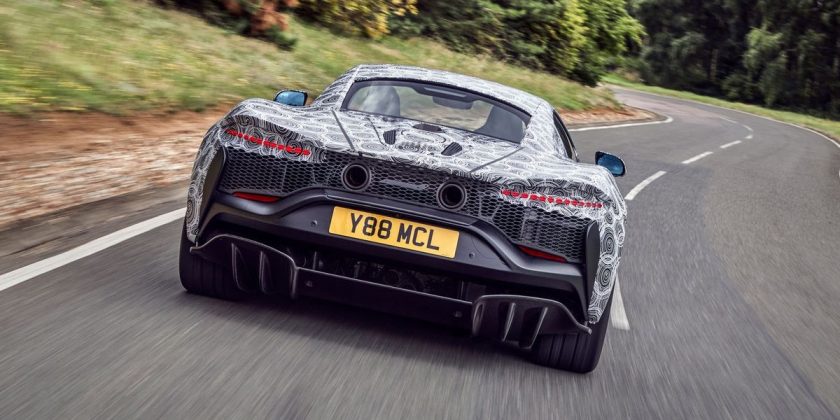
Downsizing is a risky business when your cars are built on the idea of prestige and performance, but McLaren is running the gauntlet with a new six-pot hybrid, revealed in camouflage for the first time this week.
The automotive world was shaped around the idea of bigger engines being better, after all. Even now, when more potent models share the same engine as their limper counterparts, the former come with bigger numbers to indicate their supremacy.
It’s tough, then, to argue to an established audience that dropping two cylinders is a positive. Plainly it isn’t, or at least not when viewed in such a black-and-white landscape. Given free choice and a Euromillions win, how many people would really choose a V6 over a V8? I rest my case. Mo’ cylinders: better. At least in conventional wisdom.

It’s a quandary already faced in Europe and America by Porsche with its 718 series, which – relatively speaking – went down like a pair of beige slacks when it was launched to a media reception absolutely brimmed with caveats about the then-new four-cylinder engine. It just didn’t fit the image of a 2010s Porsche, however necessary the switch to a flat-four was in order to meet emissions regs. The bottom line here is that replacing a car with something faster, more advanced and more efficient hasn’t always been enough.
The past, then, presents a strong argument that the little Mac might fall at the first hurdle, especially when most supercar buyers aren’t on YouTube and are over 50. But perhaps McLaren isn’t really gunning for that slowly dwindling market. Perhaps it’s aiming squarely at a class of emerging, wealthy younger buyers across an increasing number of global markets.

McLaren is taking a big leap to depart so dramatically from the Sports Series of cars that it has done so well with. The 570S remains a fantastically lithe and lively thing, full of power and poise without the occasionally demented edge of the 720S. The 570 and its brethren will be phased out and replaced with this new six-pot hybrid, based on an equally new (but familiar) chassis and architecture specifically designed for battery power.
But in making such a big change, McLaren is finally shaking its own banana trees and moving away from a formula that had become, some might say, too predictable; lacking innovation. No one can doubt the sweet, juicy results borne from an R&D programme that gave itself more than enough time to pefect its formulae, but change, in the 2020s, will surely be a major selling point.

Today’s kids want the world to change, and they want it to happen even faster than they can get some sweaty stranger in green cycling gear to arrive at their door with tepid food. Electrification represents the future of automotive as we know it, and from a modern teen’s perspective of never having owned or desired a big V8 for whatever reason, a clever hybrid must seem loads more relevant. It might turn into a PR win after all.
Tomorrow’s super-sports car buyer is new and impatient. He and she have different expectations; different outlooks and different ideas of what lights a firework under their Insta profile. In short, they have different ideas of what’s good and what’s better, and McLaren might just be stealing in ahead of the competition with a car not just to rival the Porsche 911, but to show it the way into the future. After such a long time ploughing the same furrow, McLaren’s new car could be a commercial disaster – or it could be the car that effectively sets the brand up for the next 20 years.
Source: Read Full Article
